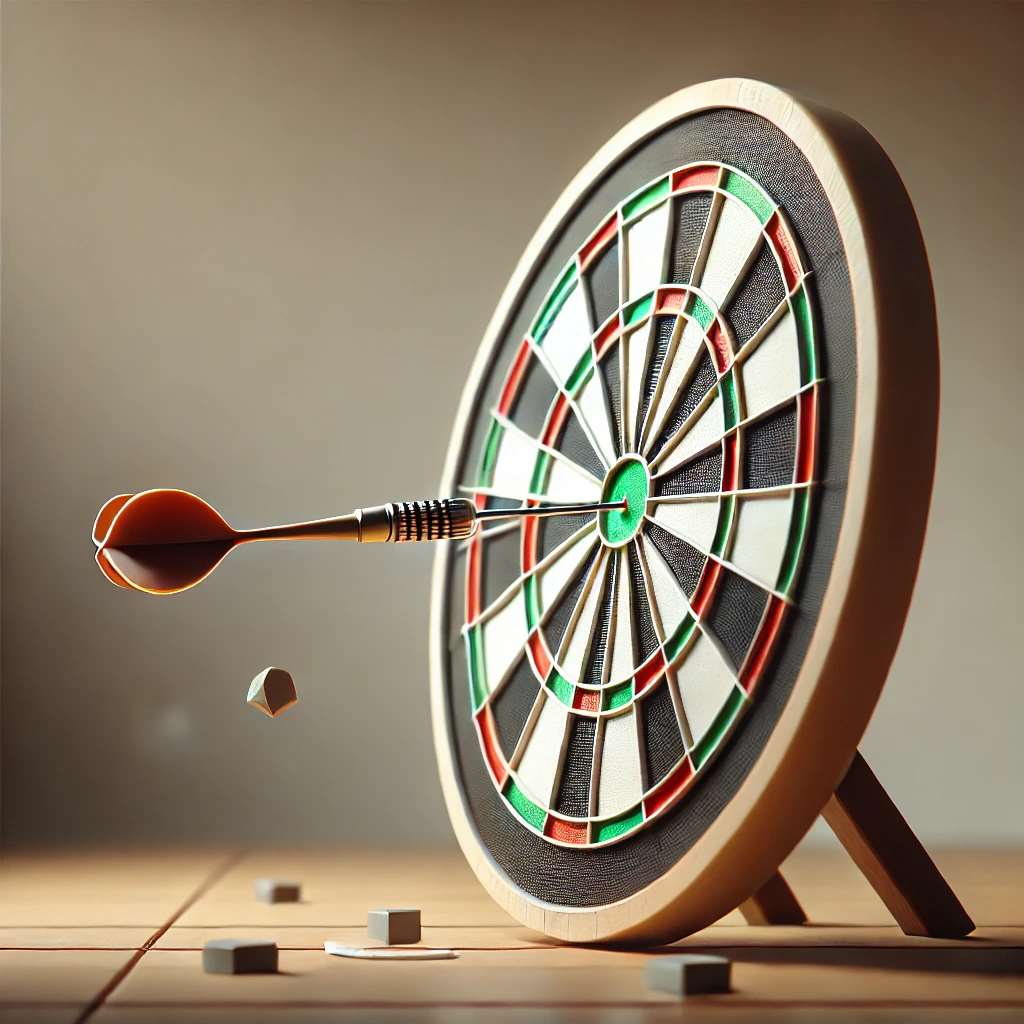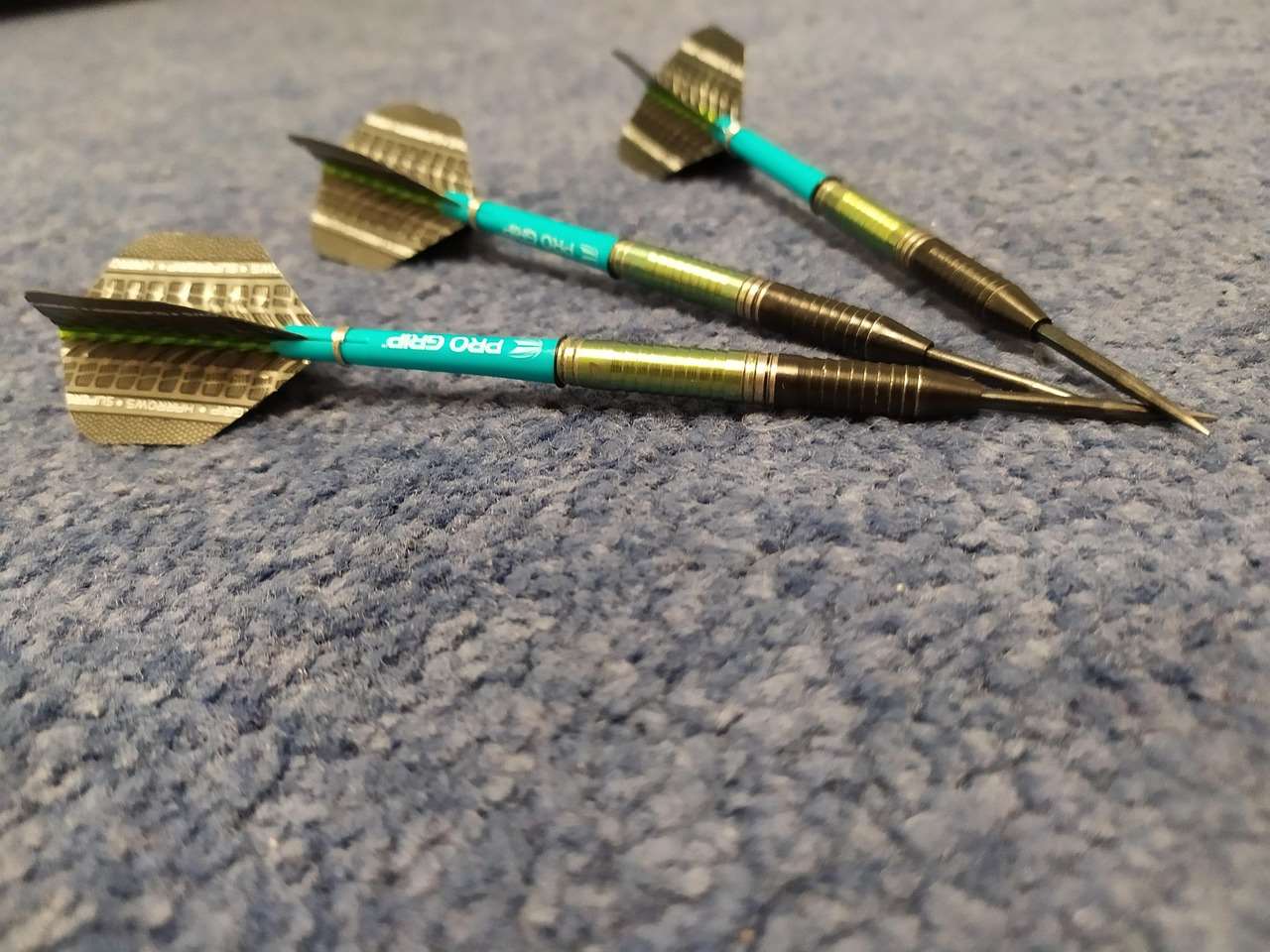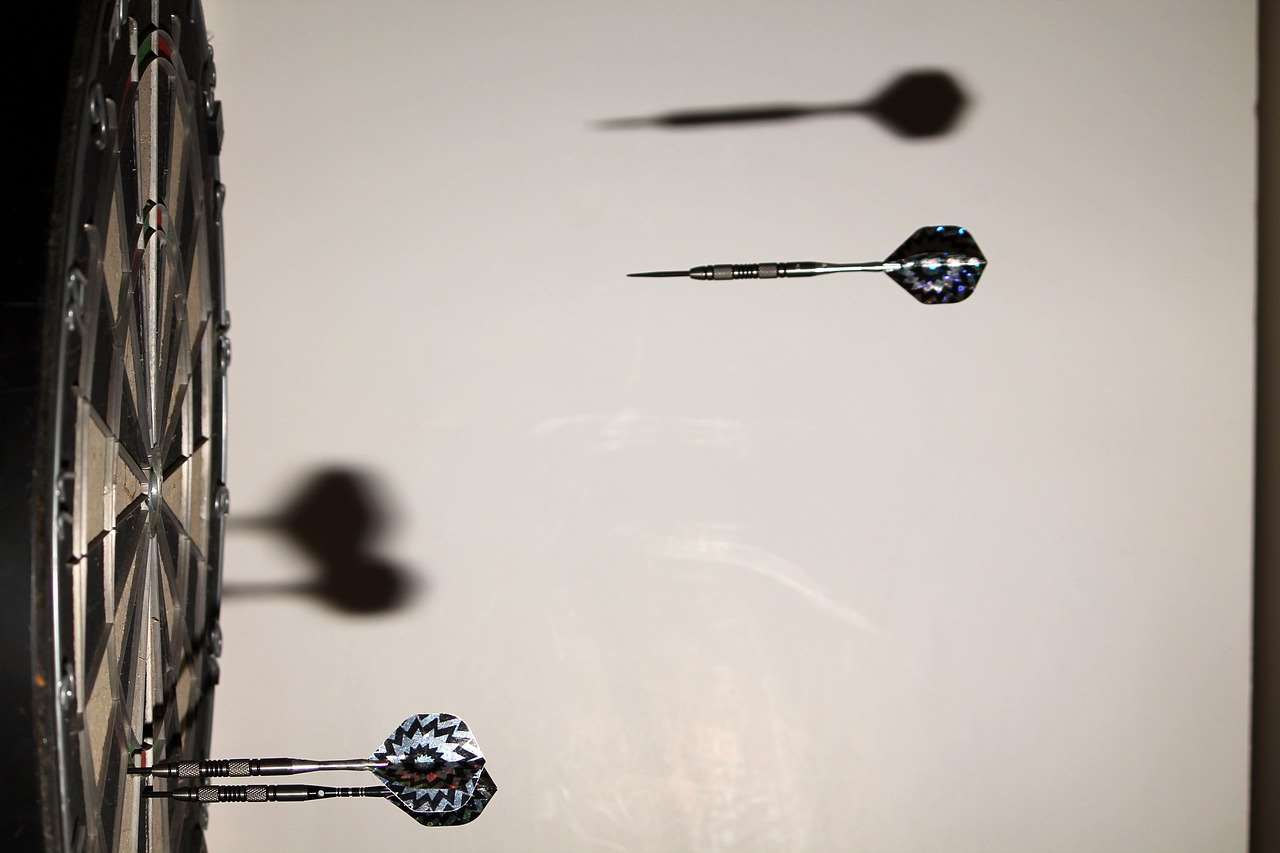In de kern, darts is a game of numbers, and understanding **basic darts math scoring addition** is crucial for success. This article will break down the fundamentals of scoring in darts, focusing on addition, from calculating your score per round to working towards that coveted zero finish. We’ll cover everything from single scores to doubles and trebles, offering tips and tricks to improve your **darts scoring** and ultimately your game.
⚠️ Still Using Pen & Paper (Of een schoolbord)?! ⚠️
Stap in de toekomst! De Dart Teller -app behandelt alle scoren, stelt kassa voor, en volgt uw statistieken automatisch. It's easier than you think!
Probeer de Smart Dart Teller -app gratis!Klaar voor een upgrade? Klik hierboven!
Understanding the Darts Board: A Foundation for Basic Darts Math Scoring Addition
Before diving into the **addition** aspect of scoring, it’s important to understand the layout of a standard dartboard. The board is divided into 20 numbered sections, ranging from 1 naar 20. You’ll also find the bullseye in the center (worth 50 points), and the outer ring, known as the **double ring** which doubles the value of the section it lands in, and the inner ring, known as the **treble ring** which triples the value of the section. This knowledge is the foundation for performing the basic addition required for darts.
Each section of the board offers different point values, and understanding these values is crucial for strategic play. Aiming for the higher numbered sections, especially the treble sections, can drastically increase your score and bring you closer to winning. Understanding the dartboard layout is absolutely crucial if you want to improve your **darts strategy**.
Darts scoring zones:
- Single Scores: Any dart that lands in the main area of a numbered section scores the face value of that section.
- Double Scores: Landing a dart in the outer, thinner ring doubles the value of that section. Bijvoorbeeld, landing in the double 20 scores 40 points.
- Treble Scores: Landing a dart in the inner, thinner ring triples the value of that section. Landing in the treble 20 scores 60 points, the highest possible score from a single dart.
- Bullseye: The outer green ring of the bullseye scores 25 points (vaak genoemd “single bull”), and the inner red circle scores 50 points (de “double bull”).

Basic Darts Math Scoring Addition: Calculating Your Round Score
Calculating your score for each round in darts involves simply adding up the values of the three darts you threw. This is where **basic darts math scoring addition** comes into play. Let’s look at a few examples:
- Dart 1: Enkel 20 (20 points)
- Dart 2: Enkel 5 (5 points)
- Dart 3: Enkel 1 (1 point)
- Total Round Score: 20 + 5 + 1 = 26 points
Another Example:
- Dart 1: Treble 20 (60 points)
- Dart 2: Enkel 20 (20 points)
- Dart 3: Dubbele 20 (40 points)
- Total Round Score: 60 + 20 + 40 = 120 points
The key here is accuracy. Even if your addition skills are strong, inaccurate throws will negate any mathematical prowess. Practice your aim and focus on hitting your target number.
Calculating Remaining Scores: Subtraction as the Next Step
While this article focuses on addition, it’s impossible to ignore subtraction in darts! Once you know your round score, you’ll need to subtract it from your starting total (usually 501 of 301). This is how you determine your remaining score and plan your next moves. The interplay between addition (scoring) and subtraction (calculating remaining points) is fundamental to darts.
Bijvoorbeeld, starting with 501 and scoring 60 in the first round, you would subtract 60 van 501, leaving you with 441.
Remember that in some game variations like **501**, you need to finish on a double. If you accidentally go below zero, or end on one, you “bust” and your score returns to what it was at the start of that round. Some people also enjoy fun dart game variations with modified rules, which may change these parameters.

Strategic Addition: Planning Your Shots for High Scores
Understanding **basic darts math scoring addition** isn’t just about adding up your score after each round; it’s also about planning your shots strategically to maximize your score. Experienced players consider not only the current round but also future rounds when deciding where to aim.
Bijvoorbeeld, if you need 161 to win, and you only have three darts, you might strategically aim for a treble 20 (60), followed by a treble 20 (60) again. This leaves you with 41. You would then aim for the single 1 to leave you with 40, which you would then attempt to hit with the double 20 to win. This highlights the need for calculating darts outcomes. It involves a solid understanding of **darts scoring** and strategic thinking.
Here are some things to consider when planning your shots:
- The highest score: The highest score you can achieve with three darts is 180 (three treble 20s).
- Leaving a Double: Aim to leave yourself with a number that can be finished with a double (2, 4, 6, 8, 10, 12, 14, 16, 18, 20, 22, 24, 26, 28, 30, 32, 34, 36, 38, 40).
- Avoiding Busts: Be mindful of your remaining score and avoid throwing a dart that would cause you to bust.
Tips and Tricks for Improving Your Basic Darts Math Scoring Addition
Here are some practical tips to help you master **basic darts math scoring addition**:
- Practice regularly: The more you play, the faster you’ll become at adding up your scores.
- Use a Dart Scoreboard App: Several apps can help you keep track of your score and suggest optimal checkouts.
- Visualize the Board: Mental visualization can help you quickly calculate scores and plan your shots.
- Practice checkout combinations: Familiarize yourself with common checkout combinations (Bijv., 170 = T20, T20, Bullseye) to improve your game.
- Stay calm and focused: Don’t let pressure affect your calculations. Take your time and double-check your math.
Don’t be afraid to start with Basis Darts Fundamentals voor beginners and gradually work your way up to more advanced scoring techniques. It’s a process that takes time and dedication.

Common Mistakes in Darts Scoring and How to Avoid Them
Even experienced players can make mistakes in darts scoring. Here are some common errors and how to avoid them:
- Misreading the Board: Double-check the number you’re aiming for before you throw. Fatigue and pressure can lead to misreading.
- Incorrect Addition: Take your time and double-check your addition, especially under pressure.
- Forgetting the Starting Score: Always confirm your starting score before you begin, especially in longer games.
- Miscalculating Checkouts: Practice your checkout combinations to avoid making mistakes when you’re close to winning.
- Not Calling Your Score: Verbally announce your score after each round to avoid any ambiguity or disputes.
Advanced Darts Scoring Concepts Beyond Basic Addition
Once you’ve mastered **basic darts math scoring addition**, you can start exploring more advanced concepts, zoals:
- Checkout Percentages: Tracking your checkout percentage can help you identify areas for improvement.
- Average Score Per Dart: Calculating your average score per dart provides a more comprehensive picture of your overall performance.
- Optimal Checkout Strategies: Learning different checkout strategies can help you choose the most efficient path to victory.
Bijvoorbeeld, some players prefer a two-dart finish where the first dart sets up the double for the final dart. This requires precise calculation and shot placement.

Adapting Basic Darts Math Scoring Addition for Different Game Variations
Terwijl 501 En 301 are the most common darts games, there are many other variations, each with its own unique scoring rules. While the basic arithmetic is usually the same, the winning conditions and strategic considerations can differ significantly.
Bijvoorbeeld, in games like ‘Around the Clock,’ the goal is to hit each number on the board in sequence. While addition is still involved in keeping track of your progress, the focus shifts to accuracy and consistency rather than maximizing your score in each round. If you play with people who are less experienced, overwegen Darts -regels aanpassen voor beginners to make the game more fun.
In some variations, handicaps might be applied to level the playing field between players of different skill levels. This often involves adjusting the starting score or modifying the scoring system. Begrip Hoe Darts eerlijker te maken met handicapregels can be a great way to introduce beginners to the game. Even adapting darts rules for small spaces: tips and tricks can influence how the game is played and scored.
Resources for Improving Your Basic Darts Math Scoring Addition Skills
There are numerous resources available to help you improve your **basic darts math scoring addition** skills:
- Online Darts Calculators: Many websites and apps offer darts calculators that can help you practice checkout combinations and calculate your score.
- Darts Coaching: Consider working with a darts coach who can provide personalized instruction and feedback.
- Darts Forums and Communities: Join online darts forums and communities to connect with other players and share tips and strategies.
- Practice, Practice, Practice: The best way to improve your darts scoring is to practice regularly.

Whether you’re aiming to improve your **darts scoring**, your **darts strategy**, or just improve your mental math, all of these resources can prove beneficial. Keep practicing your addition skills, stay focused, and enjoy the game.
Conclusie: Mastering Basic Darts Math Scoring Addition for Success
Understanding and mastering **basic darts math scoring addition** is fundamental to becoming a successful darts player. While it may seem simple, the ability to quickly and accurately calculate your score, plan your shots, and adapt to different game variations is essential for achieving consistent results. Remember to practice regularly, utilize available resources, and stay calm and focused. So pick up your darts, step up to the oche, and start adding your way to victory! Ready to take your game to the next level? Start practicing your addition skills today and see the difference it makes!
Hoi, Ik ben Dieter, En ik heb Dartcounter gemaakt (Dartcounterapp.com). Mijn motivatie was geen darts -expert - helemaal tegenovergestelde! Toen ik voor het eerst begon te spelen, Ik hield van het spel, maar vond het moeilijk en afleidend om nauwkeurige scores te houden en statistieken te volgen.
Ik dacht dat ik niet de enige kon zijn die hiermee worstelde. Dus, Ik besloot om een oplossing te bouwen: een eenvoudig te gebruiken applicatie die iedereen, Ongeacht hun ervaringsniveau, zou kunnen gebruiken om moeiteloos te scoren.
Mijn doel voor Dartcounter was eenvoudig: Laat de app de nummers afhandelen - het scoren, de gemiddelden, de statistieken, Zelfs checkout suggesties - zodat spelers puur kunnen richten op hun worp en genieten van het spel. Het begon als een manier om het probleem van mijn eigen beginners op te lossen, En ik ben heel blij dat het is uitgegroeid tot een nuttig hulpmiddel voor de bredere darts -community.